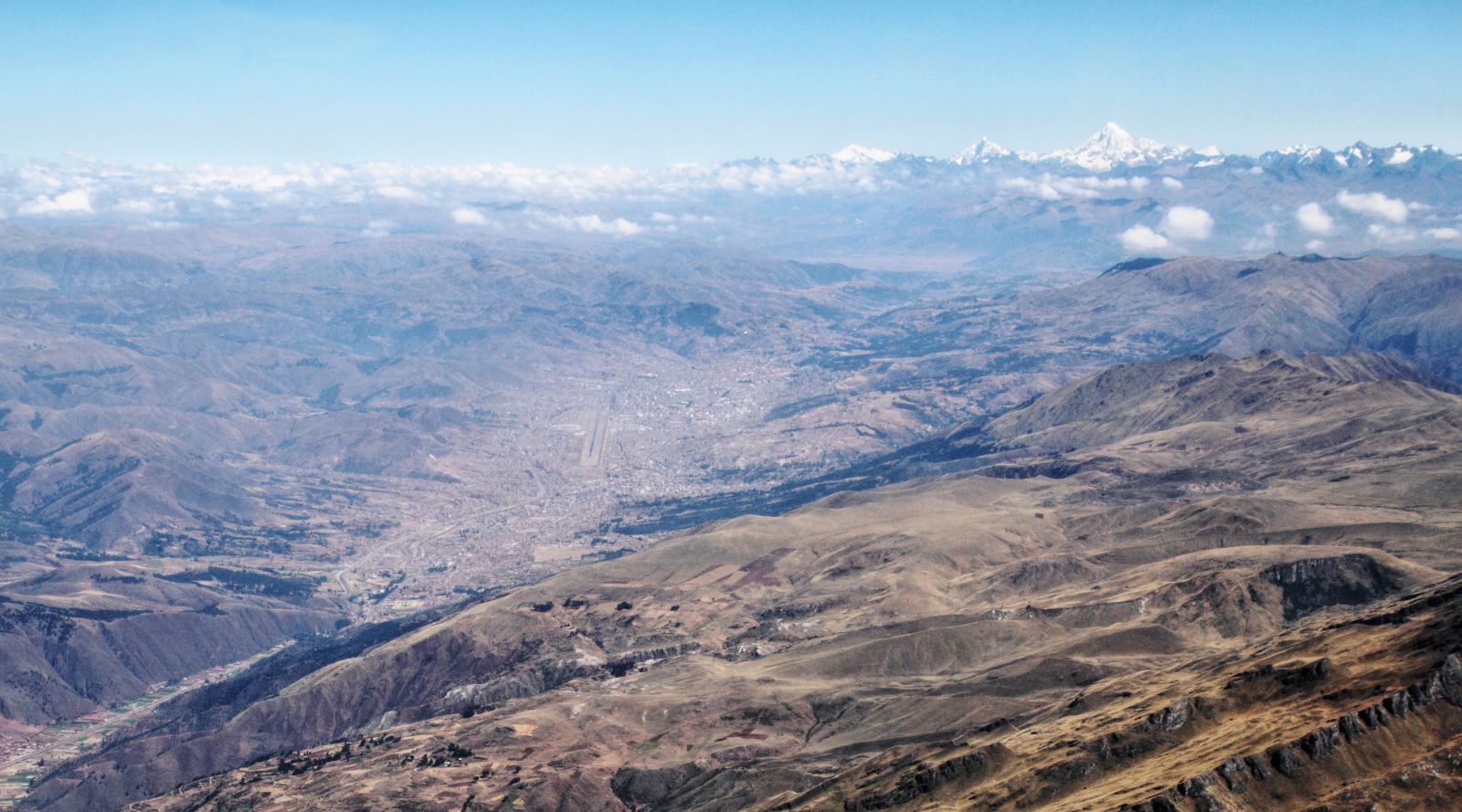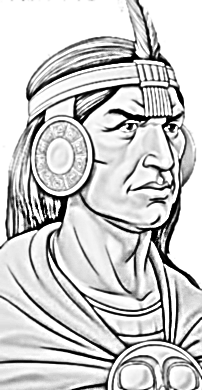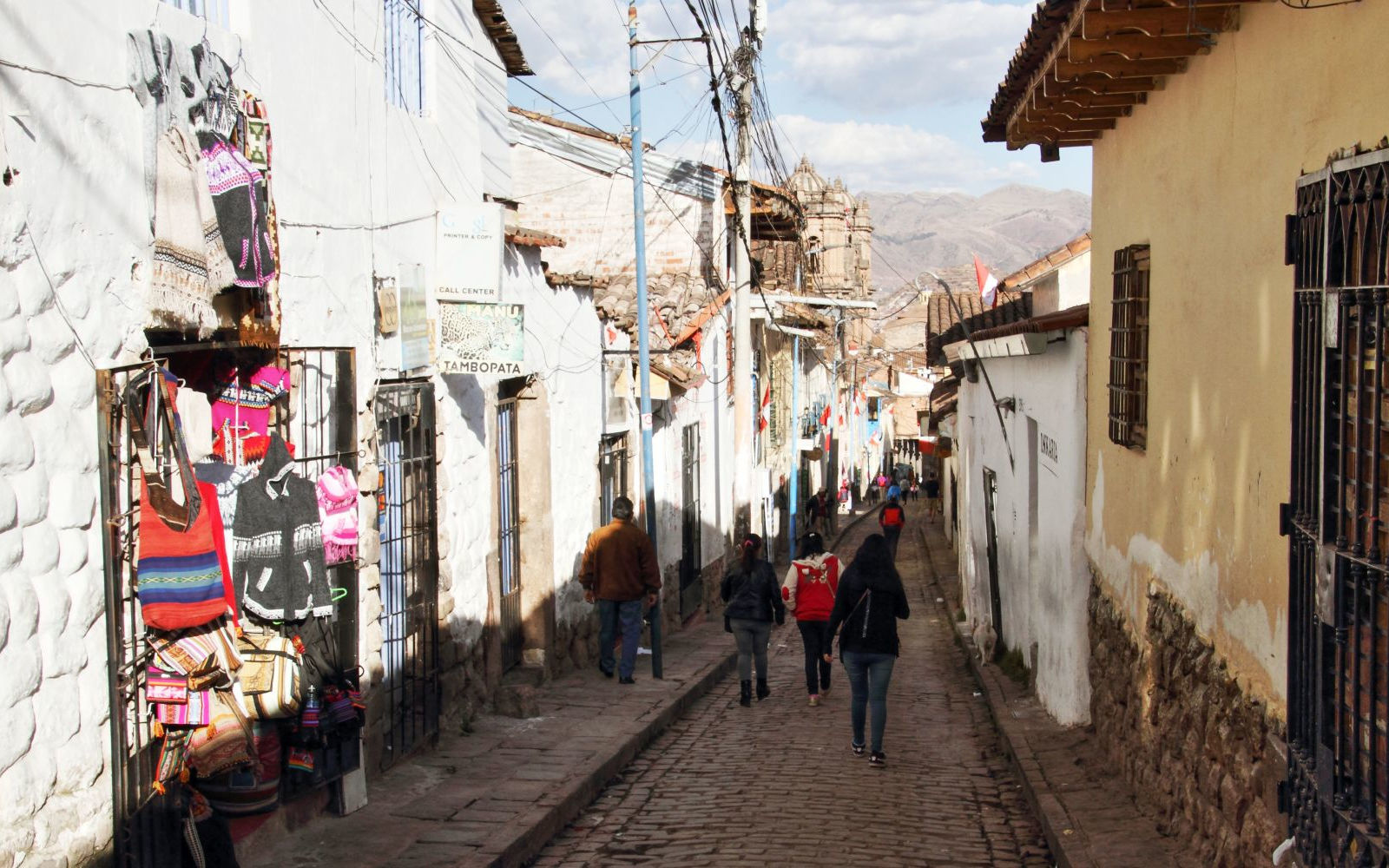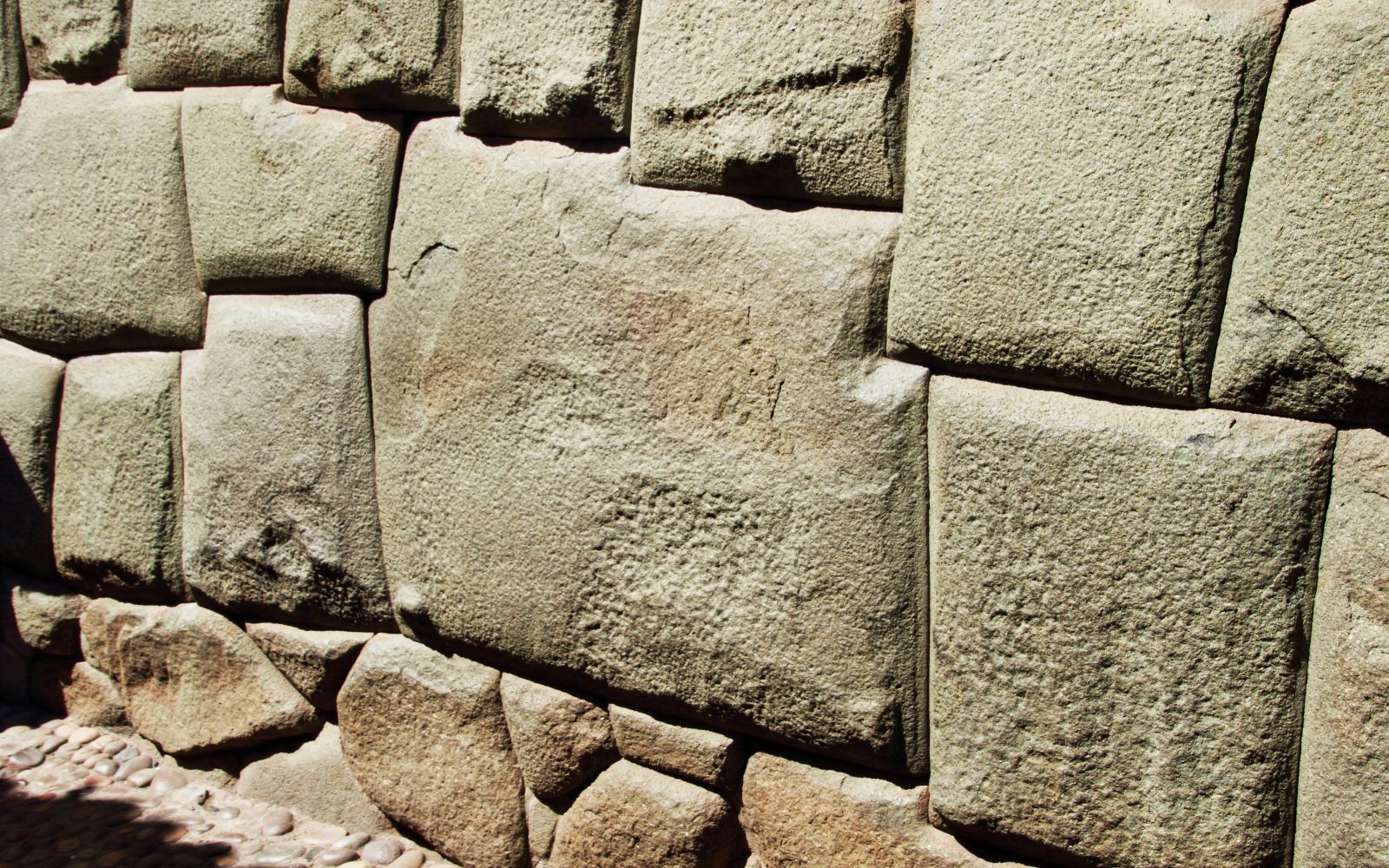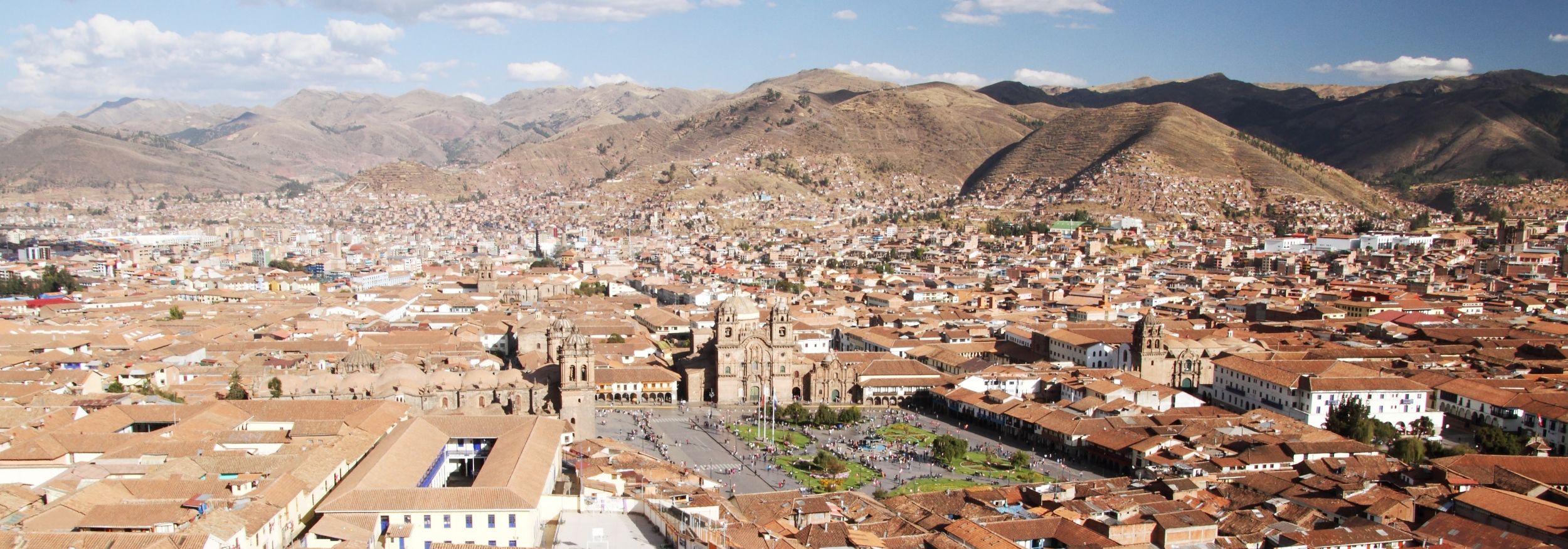

Cusco was once founded at the head of the Huatanay Valley at approx. 3400 m asl., located in the eastern part of the Andes on the territory of the modern state of Peru. The city served as the very centre of the Inca Empire from the 13th century to the Spanish conquest. Even though the historic centre of Cusco shows many features of Spanish colonial cities, a closer look reveals a rich Incan heritage. Whereas the city centre is sometimes considered one of the most beautiful of South America and has been declared a World Cultural Heritage Site by the UNESCO in 1983, the modern Cusco has to deal with rapid growth, so that much of the Huatanay Valley - including the surroundings of the airport - is now an urban area.
Enter the historic centre of Cusco by clicking on the title image.













